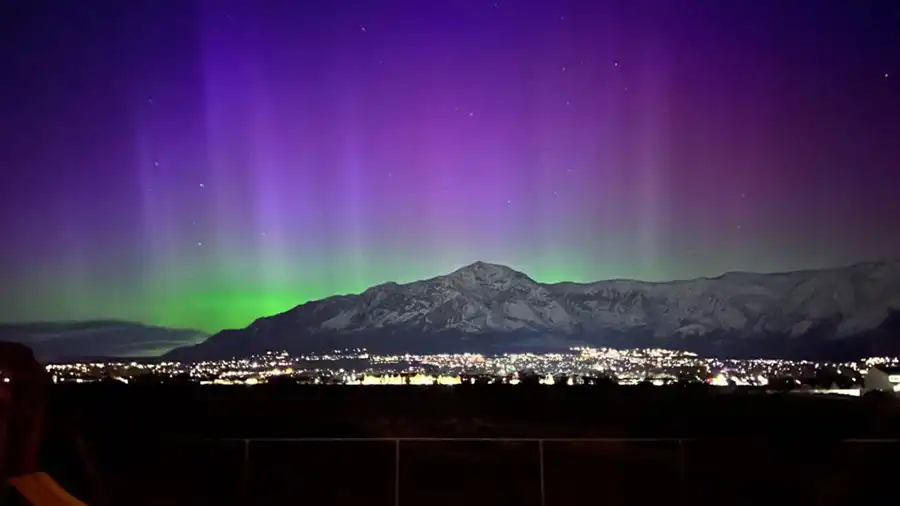Potentially historic geomagnetic storm northern lights Utah
Rare G4 solar storm set to hit this weekend, potentially causing northern lights visible in Utah and disrupting communications.
This weekend, a "potentially historic" geomagnetic storm is predicted to occur, giving Utahns the chance to witness an aurora borealis. The Space Weather Prediction Center, a division of the National Oceanic and Atmospheric Administration, issued a Severe (G4) Geomagnetic Storm Watch on Thursday, marking the first time since January 2005. The alert warns of at least five coronal mass ejections heading towards Earth from the sun between Friday and Sunday.
These solar expulsions could disrupt communications and various technologies, including the electric power grid, navigation, radio, and satellite operations. The center's director, Clinton Wallace, described it as "an unusual and potentially historic event." The storm is expected to generate a strong aurora borealis, also known as the northern lights, visible in many parts of the U.S., including Utah.
KSL meteorologist Matt Johnson suggests that the best time to view this celestial event in extreme northern Utah is between 11 p.m. Friday and 3 a.m. Saturday, based on the solar forecast. The National Weather Service predicts 10-25% cloud cover in most of northern Utah during these hours, with some areas near the Wasatch Front reaching 35-45%. Southern Utah may experience heavier cloud cover.
The northern lights result from the sun's ejections interacting with Earth's magnetic field, causing solar ions to glow in a stunning display. While these events are more common in areas closer to the North Pole, larger storms like the one expected this weekend can extend southward. States like Idaho, Montana, Oregon, Washington, and Wyoming have better chances of viewing the aurora borealis from this geomagnetic storm. The Space Weather Prediction Center even mentioned that states as far south as Alabama may have the opportunity to witness this natural phenomenon.











Comments on Potentially historic geomagnetic storm northern lights Utah